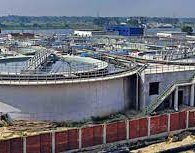That the country's leather sector despite its high potential of becoming the next growth driver of the economy is the victim of lacklustre moves is obvious to not only the industry insiders but also to observers eager to see the sector flourish up to its capacity. Absence of time-bound action plan in respect of facilitations such as central effluent treatment plan (CETP), fiscal restructuring, compliance conformity, value addition etc are some of the core issues that have been hindering the industry's smooth operations, particularly in exports. [Time-bound action plan for leather industry - Financial Express]
Given that exporting is the sole motivation of the age-old industry, any move or policy must address barriers affecting exports-- be that in terms of the physical infrastructure of the leather estate, environmental concerns from pollution, compliance norms of the importing countries, testing, fiscal measures etc. Over the years, there were moves, albeit at snail's pace-- that too in the face of critical circumstances, which did not bring any mentionable improvement to energise the industry.
Bangladesh's current share in the $215 billion global leather and leather goods market is only 0.5 per cent. This, industry experts hold, is appallingly short of the country's actual potential. Keeping this in view, industry leaders at a recent webinar, suggested providing time-bound policy support to complement the 'Leather and Leather Goods Development Policy 2019' as well as to recover from the pandemic impacts, replicating RMG model in the country's leather sector, reducing import duties on required chemicals and making CETP functional at the Savar leather estate. The president of the Leather goods and Footwear Manufacturers and Exporters Association of Bangladesh (LFMEAB) and other industry leaders while highlighting these as issues to be urgently taken up by the government, stressed the need for value addition and fulfillment of compliance norms as integral to the sustenance of the industry. The LFMEAB President in this context referred to policy continuation as a crucial need to sustain the operation and growth of the industry. He noted that from 1972 to 2019, leather export decreased by 79 per cent, while in the same period, export of finished products increased by 80 per cent. It means that the country is moving towards value addition, but sadly not with local raw materials. Speakers at the event specifically mentioned noncompliance as a key deterrent to export at the moment. Due to non-compliance issues, export-oriented leather goods manufacturers cannot source raw materials from local tanneries, which otherwise could have raised value addition substantially.
The CETP continues to be a stumbling block to export. Leather Working Group (LWG) certification is now a precondition to accessing global market but the certification would be a far cry without a functioning CETP, solid waste management and chrome recovery units in the tannery estate. So much has been said on this issue for years but no noticeable move is in sight, as of now. It is indeed intriguing that the CETP being the most essential component of the leather estate figures in the media and public discussion only to highlight the unspeakable failure of the authorities for years. The country's leather industry is desperately in need of a meaningful change in the overall scenario -- lest the prospect still in sight is not wasted.



